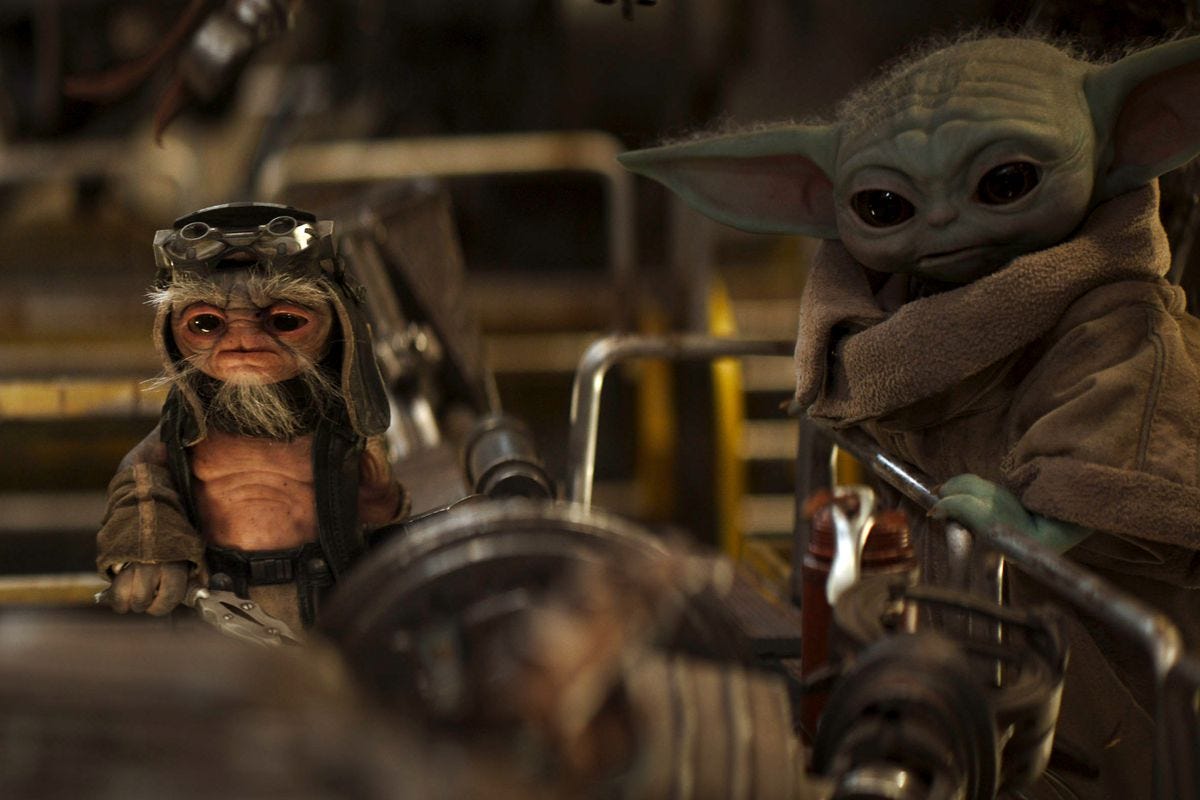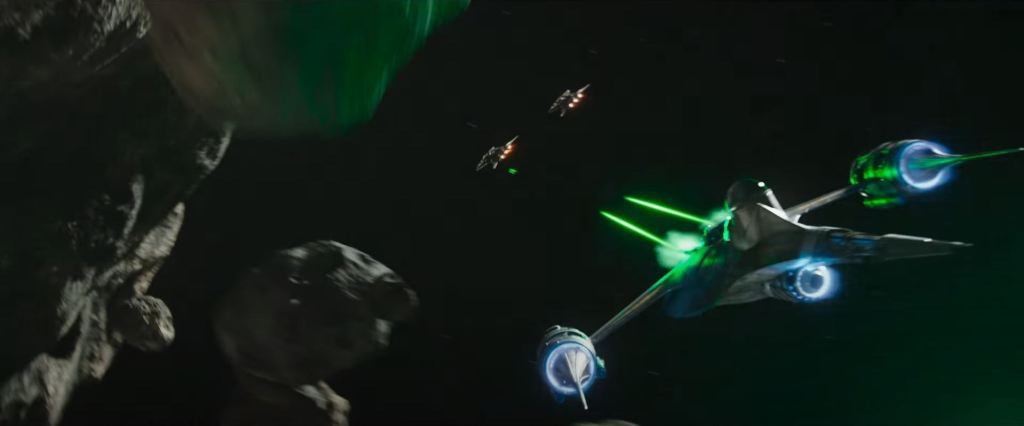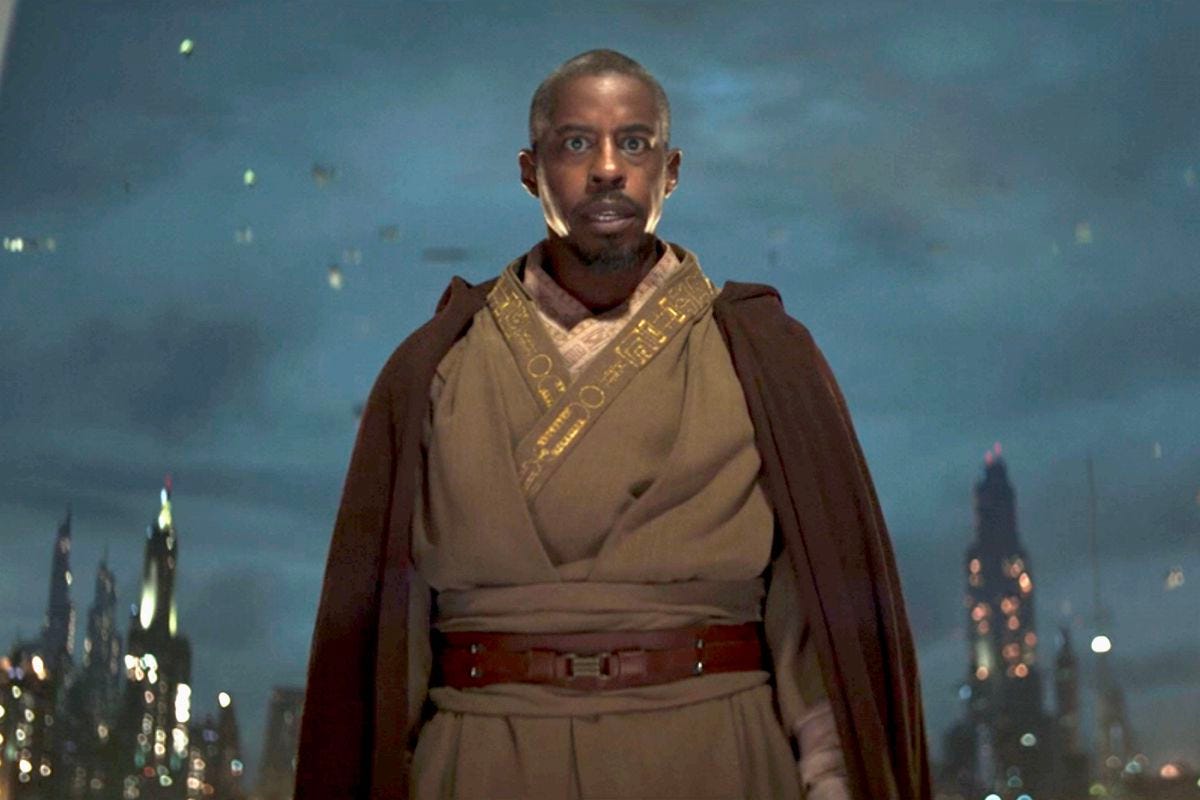Human Lens #95: 'The Mandalorian' Season 3 Review
Quality and decision making fall in a fun but questionable season
The high flying, flailing, failing, favor giving, and fatherly aura’d Din Djarin, commonly known as The Mandalorian, returned to our screens recently after what was just over a two year hiatus. The tearjerking season 2 finale, induced by fanfare action and depressing separation, saw Din succeed in bringing Grogu to a Jedi, Luke Skywalker in this case. It left the door open for the next season to go many different avenues, with an air of unpredictability stewing after the little green guys’ sudden departure. A part of me though, at the time, was worried that a new season without Grogu would lose the charm of silly creatures, comedy, and the adventure of the week formula that I had grown to love out of the series. What did the future of this series look like?
It’s from here on that questionable storytelling choices began for these characters, starting with the surprise reunion, that was extremely unceremonious in my opinion, of Grogu and Mando on a completely different show, The Book of Boba Fett. The by the numbers mediocrity of Boba Fett’s first title outing, that turned out to be a season 2.5 for The Mandalorian universe, was a sour taste in the mouths of a lot of people. Because of this, seeing Grogu and Din back together again in the season 3 premiere, the immediate episode after their emotional separation, didn’t flow very well. This brings us to the first problem that season 3 has: events occurring offscreen. (There will be spoilers from here on out so skip to the last paragraph for my final thoughts if you still haven’t watched the season)
While the Grogu reunion technically didn’t occur off screen, it happened on a completely different show. A show that had less viewership than The Mandalorian itself, and one that I guarantee still hasn’t been seen by some fans of the initial series. The Book of Boba Fett also detailed key information about the fall of Mandalore and the Darksaber that are mentioned in the series, with only the “previously on” portion before the show giving a reminder to this. Another disappointing omission from the series that is mentioned is the escape of Moff Gideon on the way to his trial. It feels like something that should have been shown to us in a cold open, instead spouted as rumor among many characters across the season, and finally confirmed in a random scene where the New Republic’s Carson Teva comes across Gideon’s destroyed transport ship.

Before I get into the positives, I want to talk about the writing of this season. While I’ve seen criticisms about what people would have preferred to see, I like to think about how the team could have executed what they had, or were going for, better. In the case of this season, characters don’t really go on arcs. They just have things happen to them, taking decisions and personal growth out of our protagonists hands. The biggest example of this is Bo Katan, whose only personal decision comes from going to save Din in episode 2. After that, she sees a Mythosaur, has her home destroyed, is told she can join The Watch, is told she can remove her helmet for unification, is gifted the Darksaber, and has the Darksaber destroyed.
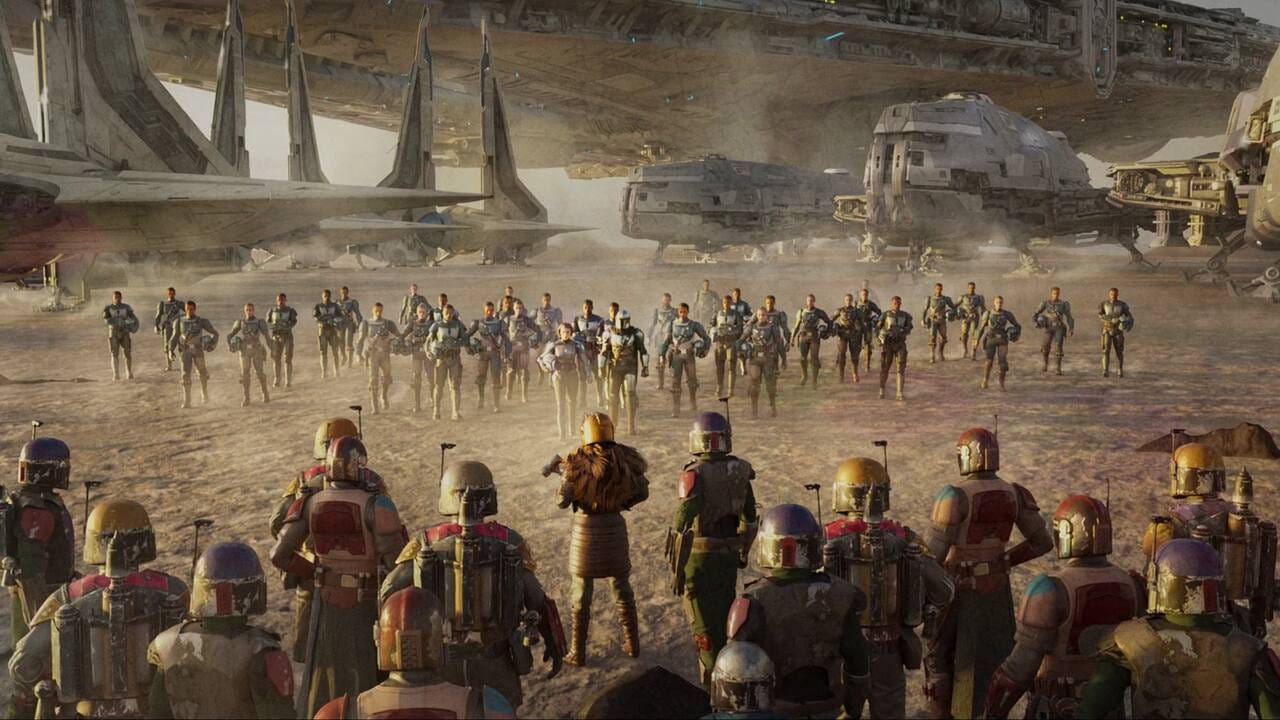
A lot of these moments that, in the context of the season, are supposed to be big character moments come across as emotionless. Offering to join The Watch herself would have shown that the Mythosaur affected the way she sees the entire culture, removing her helmet and taking a stand for the different ways clans follow the creed would have increased her leadership qualities and her ability to stand up for what’s right, and throwing the Darksaber aside in the name of independence from trinkets and heirlooms would have doubled the importance of the line “Mandalorian’s are stronger together.”
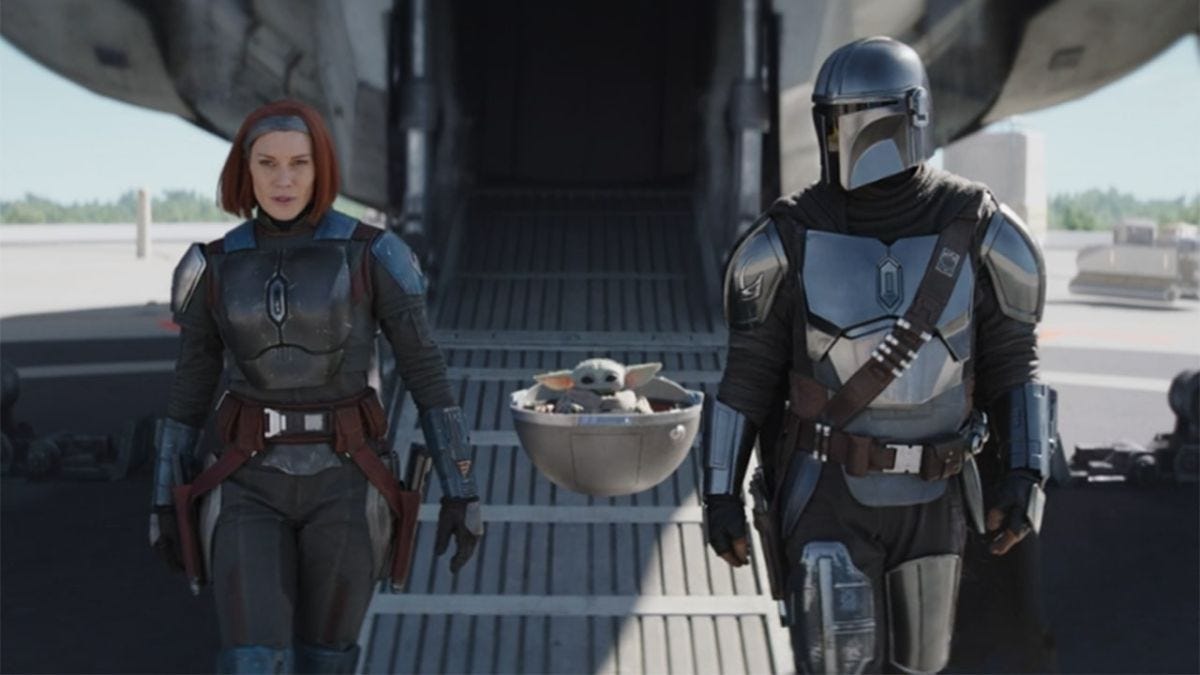
Now let’s get to those positives as there was a lot to like in this season despite the negative aura I’ve been producing so far. Katee Sackhoff’s upgrade to series regular as Bo Katan is one of the bright spots of the season, as Din takes a semi-back seat in order to build the galaxy wide reach of the Mandalorian people. Her character is paramount in hammering home the overall message of the season — “Mandalorian’s are stronger together.” It’s simplistic in it’s phrasing to the point where I hope it becomes synonymous with fans like “this is the way.” There’s a vast array of humanity on our world; different cultures, beliefs, and personalities, and they’re all just as worthy as the next. I love the way this season explores how letting people into your life can wash away personal strife that comes from negativity, misunderstanding, and lack of exposure. Din and Bo went from chastising and disowning the way each other followed the creed to eventually becoming inseparable partners, all starting by bonding over a cup of soup; one that Bo swore was a known dish to all Mandalorians, despite Din never having it — a juxtaposition to Bo removing her helmet being shocking to Din. Their relationship reaches a level of vulnerability that comes from time and trust, teaching each other and forcing their separate clans, respectively, to realize that good people are just good people, whether you like the way they convey themselves or not, nothing changes that. Ignorance is a wasted strife.
Moments I liked in the season include every single aerial battle. Mando’s brand new N-1 star fighter that he gets in The Book of Boba Fett gives him a ship with more mobility to get more fighter action into the series. And let’s not forget all the jetpack battles that I never dreamed would reach my eyes through a live action medium. I love the goofiness of the pirate gang, lead by the swamp bearded alien Gorian Shard — stealing scenes in his minimal appearances. Shard and his pirates also appear in one of my favorite episodes in the middle of the season that sees Mando’s covert help liberate Nevarro from the crew. The second episode of the season, The Mines of Mandalore, is one of my favorites of the whole series, delivering creepy aliens, well staged action, and supplying the building blocks to Bo and Din’s arc together. We got a glimpse into the politics of the New Republic and how they’re struggling to shine a light past the Empire, assuming that winning the war was enough. I also loved Jar Jar Binks actor Ahmed Best not only reprising his role as Jedi Master Kelleran Beq, from the YouTube series Star Wars: Jedi Temple Challenge, but also being revealed as the one to have initially saved Grogu during Order 66 — Best getting more love from fans after so many years of toxicity driving him to depression over the Jar Jar Binks character. Finally, the resolution to Moff Gideon’s plans was a long time coming, and one I’m happy we finally got answers to.
I want to wrap things up with a little rant about the production side of this season. I’ll first shout out the great work of the directors, with Rick Famuyiwa, Carl Weathers, and Bryce Dallas Howard welcoming newcomers Rachel Morrison, Lee Isaac Chung, and Peter Ramsey, all turning in excellent work. But I really want to deep dive into the cinematographers. For a series that was pioneering the Volume technology and providing high, movie production, value to boot, this third season takes a drastic dip in quality when it comes to the look and feel of the show. This is where I give props to Baz Idoine, the cinematographer who shot the most episodes (10) of the first two seasons of the show. His work, alongside Greig Fraser, combined the accessibility that the Volume set provides with lighting that blended background and foregrounds to make a seamless environment for the show that had me questioning what was on real sets and what was virtually constructed.

With their departure, The Book of Boba Fett cinematographer, David Klein, stepped in to take on most of the season, with his work on both shows being very disappointing in certain outdoor lighting scenarios. The two pictures above show the differences between the first two seasons; this season making the LED Volume look more like a green screen now, and sometimes worse, than it ever did before. I may write another article about the Volume eventually as a follow up to one I did last year, but it appears that those who didn’t work to develop this technology have had a hard time utilizing it to the lengths that Baz and Greig have. The muddied and boring look of Ant-Man and the Wasp: Quantumania, Obi-Wan Kenobi, and The Book of Boba Fett are prime examples compared to The Batman, Thor: Love and Thunder, and early episodes of The Mandalorian (all worked on by Greig and Baz).

With technical and writing hiccups aside, there were a lot of moments to like in season 3 delivered on a see-saw — not knowing if it wanted to be a long form drama or continue to be an adventure of the week. While we got flashes of story beats that resulted in characters having things happen to them instead of going on a journey, necessarily, the moments that are fun are still there. The development of Din and Bo’s relationship, the most important arc of the season, is easily the most well developed on the page. So even though the season was frustrating at times, I left each week with at least a scene or an overall aspect of an episode sticking with me. On top of that, I think they tied the overarching story of the first three seasons into a nice little bow. If this were the end, I’d be happy with where everyone leaves off. But, knowing it’s not the end, I’m excited for a new chapter, or a fresh novel if you will, to begin very soon.




